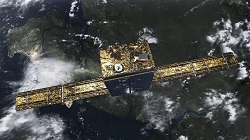Accurate, affordable rainfall measurements
Developed within the EU-funded project MARG (Development of a high resolution, low cost, short range precipitation radar system), the new low-cost and fully automated microwave rain gauge system is able to measure the rainfall intensity near land accurately. The most common method currently used relies on large funnelled cylinders with a smaller measuring tube inside it. As rain gauges' measure rainfall intensity at a single point, data from a network of gauges is combined with long-range radar for rainfall estimations. In using long-range weather radars, many end-users, including farmers and small to medium-sized enterprises (SMEs), are faced with several constraints. Operating costs, in particular, are prohibitive. Researchers initiated the MARG project to offer an affordable and innovative measuring device. Specifically, project researchers developed a user-friendly real-time system for monitoring both the spatial distribution and intensity of rain with under 100m resolution. To this end, they worked together with SMEs specialised in water resource management, meteorological companies and microwave hardware manufacturers. The new measurement device, named microwave areal rain gauge (MARG), combines state-of-the-art microwave technology, digital signal processing and geographic information systems(GISs) along with novel algorithms to measure rainfall rates. By retrieving morphological information from an integrated GIS, it identifies different rain type events. Furthermore, it can deliver cumulative radar data representing the total precipitation over a selected time period as well as short-term rain forecasts. The processed data products – rainfall accumulation maps – are provided to end users by the GIS-based web service. Through accurate, long-range rainfall estimates, the MARG system is expected to play a critical role especially in water systems, sewages and treatment plants as well as irrigation control systems. For the commercialisation of this new rain measurement system, MARG partners are considering follow-up projects within HORIZON 2020.
Keywords
Rainfall, MARG, microwave rain gauge, SMEs, rainfall accumulation maps







